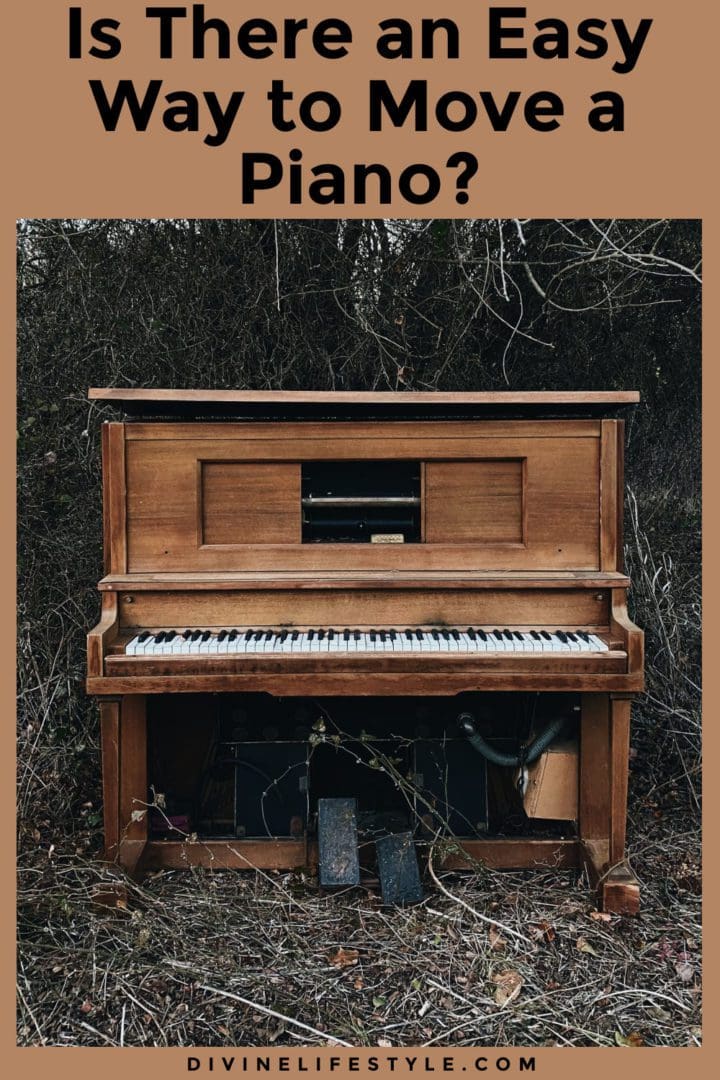ToiletTree Fogless Shower Mirror Review
We were recently sent the ToiletTree Fogless Shower Mirror to try out. We live in a very humid climate and we tend to go through periods where NOTHING will stick on our shower walls....
Pianos are probably among the most valuable, delicate, and heaviest items to move. Whether you’re transferring the piano to a different space within your current home or relocating it to a new place, moving a piano can be risky for both the piano and yourself. The process entails disassembling, packing, and transporting the piano – but it’s easier said than done. You need proper preparations and planning as well as the right tools and techniques. This is particularly true if you’re moving the musical instrument across very tight spaces or between different floors. We hope that you find this How to Move a Piano post valuable.

You might wonder: is there an easier way to move a piano? Yes, there is, but the safest and easiest way entails some cost. Hiring professional movers is the best way to deal with piano moves.
If you own a piano that is oddly shaped, antique, or heavy, it's highly recommended to consider hiring professional piano movers. Pianos can weigh anywhere from around 500 pounds to a ton. By hiring experienced contractors, you can be assured that your piano is well-protected and given the utmost care. They take on the risks and challenges associated with the project.
<p>Piano moves are considered a highly technical project that requires expertise. There are moving companies that specialize exclusively in piano moving. Piano moving contractors are experienced with the process and are familiar with the steps involved. They come fully equipped with packing supplies, tools, and specialized piano moving features. They also have equipment like a forklift, skates, roller skids, air bearings, truck dollies, etc. Most movers also have a fleet of trucks where the piano can be safely loaded.
Upon arrival, the movers will conduct a quick survey of your home to plan the best route for moving the piano. They will measure the halls and doorways to ensure that they are wide enough for the piano to pass through. If there are any areas where passing through is impossible, they will consider other options such as using the backdoor or windows. Rest assured that they have the necessary equipment to handle these approaches.
Usually, they will disassemble the piano before packing it to make it easier to move. Taking the piano apart also reduces the weight of each load and helps to protect the fragile instrument during transportation. The movers will detach the lid, lyre, base, and other parts before moving to make the work more manageable. Although this process may take more time, it is still the most efficient technique.
Once the piano is disassembled and packed, the movers will carefully move it across the room and load it into the truck. Grand and upright pianos differ in size and dimensions, so the approach and equipment used during the moving process may vary.
If you opt to move it yourself, be sure you have a few extra hands to help. They’re not only awkward but also very heavy. Weighing anywhere between 200 lbs to a ton, you’ll need every help available. Ideally, you need to have at least four people to assist you throughout the move. The top half of the upright piano carries all the weight while the feet can be fragile. You need people to help with both of these parts. If you don’t have the budget for movers, you can ask friends and family. Just be sure that they are physically able to do the job.
Having the right equipment can help make the move easier and safer plus make it more fun spending time at home. You can rent or borrow heavy-duty straps so you have a more secure hold. A furniture dolly can also help support the weight of the piano. Protect the piano by purchasing padding or blankets. This proves useful as you move the piano through the halls and doors. Without proper protection, your piano can sustain scrapes and scratches. Also, it can damage or cause cracks in the walls.
Bob Vila says, “Do not attempt to move a piano without adequate equipment. You risk damaging your home and the piano.” These tips can help you decide what to do. Remember the piano should be tuned after any move. Whether it is just across the room or to a different place, the internal mechanics can become damaged during the relocation. Although pianos seem pretty solid, they have delicate inner workings that are sensitive to bumps and movements. We hope that you find this post valuable. Good luck!
